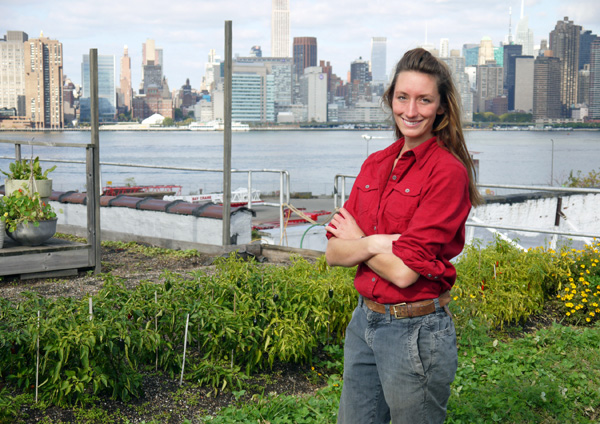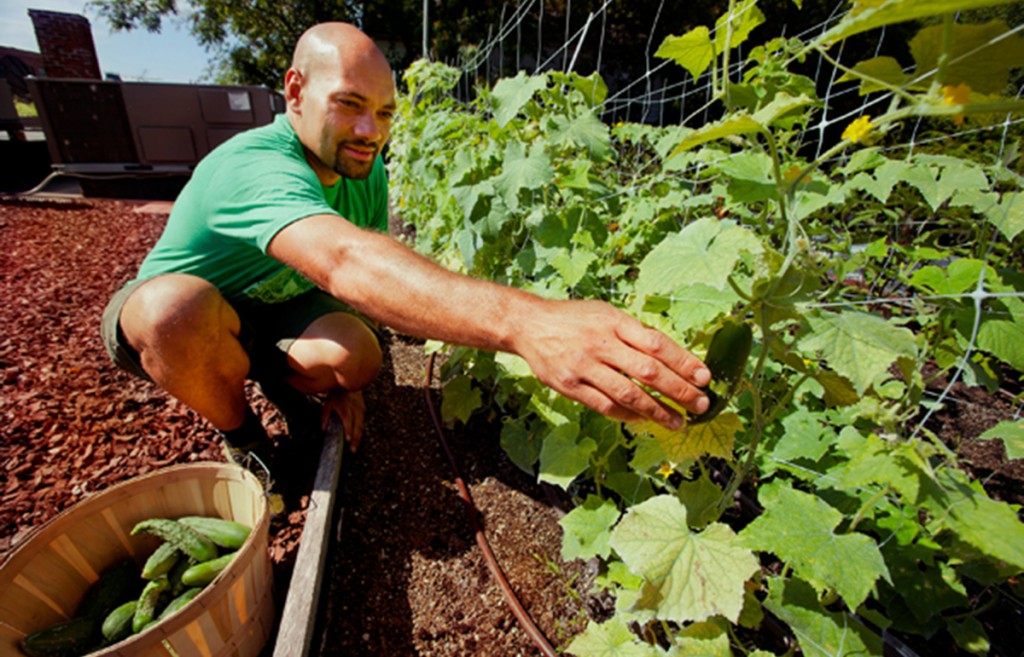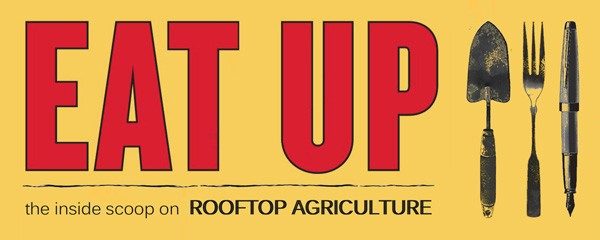EAT UP turns two!

Roof-to-Table Launch Event, 2013 || photo by Jane Winkel
It’s hard to believe, but this week EAT UP | The Inside Scoop on Rooftop Agriculture turns two! My little bubelah is so grown up. Since EAT UP’s publication by New Society Publishers in spring 2013, urban farmers and gardeners across the world have been able to get their paws on the first full-length book about rooftop food production.

Rooftop farmer Annie Novak at Eagle Street Rooftop Farm, 2010 || photo by Lauren Mandel
Some historians believe that rooftop agriculture dates back to 600 BCE Iraq, so how much could have possible changed in the past two years? As it turns out, a groundswell has emerged. When writing the first draft of EAT UP back in 2010, I posed the question of whether rooftop agriculture is viable. At that time, little published information existed on the subject, aside from a handful of magazine articles, so I began conducting interviews with the budding industry’s leaders. Annie Novak, Viraj Puri, Mohamed Hage, and Ben Flanner – all titans in the rooftop agriculture movement – were some of my first interviewees. These urban farmers and CEOs revealed that the question of viability was moot; rooftop agriculture is real and it’s happening.
In response to the rapidly blossoming North American rooftop agriculture movement, drafts two through four of the book increasingly shifted focus from viability analysis to how-to. Draft five (which was ultimately published as EAT UP) functions as a comprehensive resource featuring over 15 inspirational projects and offering readers the tools they need to pursue rooftop food production at three scales: gardening, farming, and industry.
During five short years of manuscript re-writes and post-publication, so many new rooftop farms and gardens have emerged that it’s become wonderfully impossible to keep track of each project. The rooftop agriculture movement has organically reached it’s twining shoots around balconies and fire escapes, up walls, and across school and spanning warehouse roofs. It’s everywhere. In fact, a recent National Gardening Association report found a 17% increase in households with edible gardens during the past five years (from EAT UP’s first draft to now), which includes more than 13 million millennials. The majority of millennials live in cities, so it’s conceivable that many of these gardens occupy urban settings. Oh how the tide has changed!
Geographically speaking, where has the greatest increase in rooftop farms and gardens emerged? As the birthplace of North America’s commercial rooftop agriculture industry and a city where space is at a premium, it’s no surprise that New York City makes the cut. Chicago and Toronto’s green roof bylaws and favorable urban agriculture regulations similarly lend themselves to industry growth, so there’s no surprise there.

Ledge Kitchen & Drinks, 2012 || photo by Patrick Rogers Photography
And then there’s Boston. Between you and me, Boston’s leadership in the rooftop agriculture movement comes as an utterly wonderful surprise, given the city’s cold climate and moderate density. Many of the city’s high profile projects were designed and built by REcover Green Roofs, based in nearby Somerville, MA. The company’s first food roof was built in 2010 atop a restaurant called Ledge Kitchen & Drinks, with later installations above the Boston Design Center and Whole Foods Market Lynnfield. Just this week REcover Green Roofs’ newest food roof, Fenway Farm, began production at Boston’s own Major League Baseball stadium, Fenway Park. Stay tuned for an EAT UP Blog post on this farm soon.
How will the rooftop agriculture movement mature by EAT UP’s next few birthdays? That’s entirely up to you. Climb up there and get started!
 EAT UP
EAT UP
Great book! Congrats!!
Thank you very much, Jeff! EAT UP readers would love to hear about your next rooftop greenhouse install.
Happy Birthday, EATUP
Thanks, Wendy!
Happy birthday and congratulations. Urban agriculture and green roofs are wonderful combos! Keep it up!
Thanks for the love, Jeff!